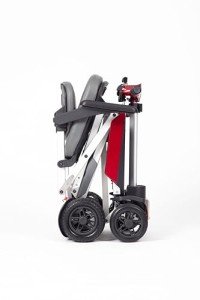Understanding Mobility Devices: Enhancing Independence and Quality of Life
In today's fast-paced world, the desire for mobility is universal. However, specific medical conditions or age-related difficulties can impede motion, resulting in a continuous look for assistance. Mobility devices serve as vital tools to enhance independence, enhance lifestyle, and enable individuals to engage fully in their neighborhoods. This article offers an extensive summary of mobility devices, including their types, functions, selection requirements, and more.
Types of Mobility Devices
Mobility devices vary from easy aids to complicated equipment, customized to fulfill numerous needs. Below is a table summarizing typical types of mobility devices:
| Type of Device | Description | Perfect For |
|---|---|---|
| Walkers | Four-legged support devices that provide remarkable stability while strolling. | People requiring additional support. |
| Walking sticks | Single or three-legged sticks that enhance balance and support walking. | Those with small mobility troubles. |
| Wheelchairs | Seats installed on wheels, available in handbook and electric variations. | Individuals with minimal or no mobility. |
| Scooters | Electric vehicles created for outside usage and ease of navigation. | Those who can't walk cross countries. |
| Crutches | Devices that assist individuals move weight far from a hurt leg. | Individuals recovering from leg injuries. |
| Rollators | Walkers with wheels, seats, and brakes for boosted mobility. | Users requiring rest choices while strolling. |
| Raise Chairs | Reclining chairs that assist users in standing and taking a seat. | Seniors or those with mobility constraints. |
| Mobility Scooters | Small electric lorries for limited mobility, often used outdoors. | Individuals needing support over fars away. |
Key Features of Mobility Devices
When choosing a mobility gadget, numerous key functions must be considered to make sure optimum performance and ease of use:
- Weight Capacity: Understanding the device's weight restriction is crucial for safety and efficiency.
- Adjustability: Devices must be adjustable in height and width to fit the user easily.
- Portability: Lightweight and foldable choices are vital for users who travel or need transportation.
- Stability and Safety: Look for features like anti-tip wheels and tough structures to enhance safety.
- Reduce of Use: Simple systems and easy to use designs can make a considerable distinction in day-to-day usage.
- Comfort: Ergonomic styles and padded seats can enhance the user experience.
Selecting the Right Mobility Device
Choosing the ideal mobility device can be a daunting task. Here are some actions to guide the decision-making process:
- Assess Needs: Evaluate the individual's mobility challenges and daily activities.
- Consult a Professional: Engage healthcare experts who can provide recommendations based upon the individual's physical condition.
- Trial Options: If possible, trial different devices to figure out convenience and functionality.
- Evaluation Budget: Consider the expense of the device, including any extra features or adjustments required.
- Research study Options: Determine the best brand names and designs by reading reviews and comparisons.
Table: Comparative Analysis of Popular Mobility Devices
| Gadget | Benefits | Disadvantages |
|---|---|---|
| Walkers | Excellent stability, promotes walking. | Bulky, might restrict movement in small spaces. |
| Walking sticks | Lightweight, enhances balance. | May not supply adequate support for severe mobility concerns. |
| Wheelchairs | Ideal for those with significant mobility restrictions. | Can be troublesome, especially in indoor environments. |
| Scooters | Great for outdoor use, easy to maneuver. | Restricted indoor usability, much heavier. |
| Rollators | Provides rest option, easy to move. | May require more space than conventional walkers. |
| Lift Chairs | Comfy, assists shift from sitting to standing. | More costly, bigger footprint. |
Frequently Asked Questions (FAQs)
1. What is a mobility device?
A mobility gadget is any tool developed to help people in moving and navigating their environment. This consists of walkers, wheelchairs, scooters, and crutches.
2. How do folding mobility scooters understand which mobility gadget is best for me?
Consider your specific mobility challenges, physical capabilities, and lifestyle needs. Consulting with healthcare experts can likewise supply tailored recommendations.
3. Are mobility devices covered by insurance?
Many insurance coverage plans, including Medicare, might cover certain mobility devices. It's essential to consult your insurance company for particular protection information.
4. Can I lease a mobility gadget rather of purchasing one?
Yes, many medical supply shops and drug stores provide rentals for mobility devices. This alternative is advantageous for people with momentary mobility problems.
5. How can I preserve my mobility gadget?
Routine maintenance is essential. It consists of cleaning up the gadget, looking for wear and tear, and ensuring all parts are functioning properly.
The Impact of Mobility Devices on Quality of Life
Mobility devices significantly enhance the lifestyle for people with limited mobility. They foster independence, motivate social interaction, and boost access to important services and leisure activities.
- Increased Independence: Users can browse their areas, go to occasions, and participate in pastimes without counting on others.
- Social Engagement: Mobility devices help with participation in celebrations, therefore combating sensations of seclusion.
- Improved Safety: Devices offer stability and lower the risk of falls, promoting user confidence.
Mobility devices are more than just tools for motion; they are gateways to self-reliance and quality living. By understanding the different types of mobility aids offered, their key functions, and factors to consider for choosing the best device, people can make informed decisions about their mobility requires. Ultimately, the right mobility gadget can cause a more active, satisfying life. Whether it's a walker, wheelchair, or scooter, the ideal option contributes significantly to improving the mobility and independence of users.

